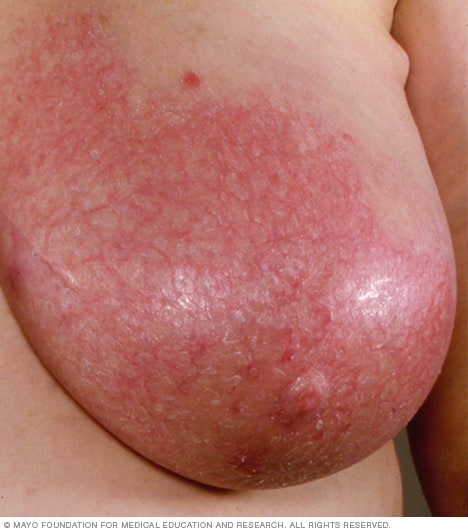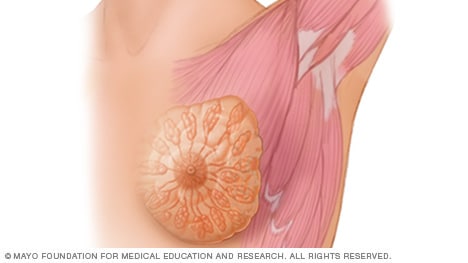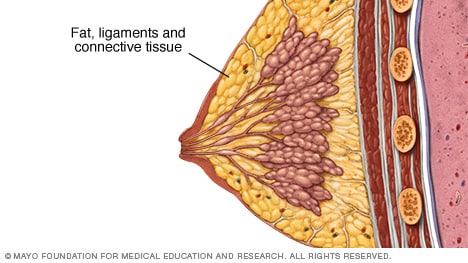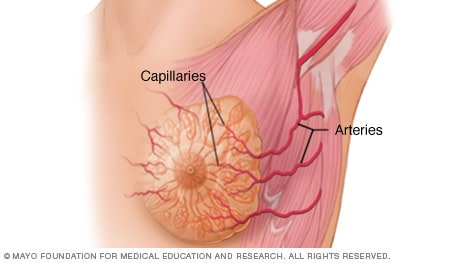Overview
Mastitis

Mastitis
Mastitis, which chiefly affects breast-feeding women, causes red, swelling and pain in one or both breasts .
Mastitis is an excitement of breast tissue that sometimes involves an infection. The excitement results in breast trouble, swelling, heat and red. You might besides have fever and chills .
Mastitis most normally affects women who are breast-feeding ( lactation mastitis ). But mastitis can occur in women who are n’t breast-feeding and in men.
Reading: Mastitis – Symptoms and causes
Lactation mastitis can cause you to feel run down, making it unmanageable to care for your baby. sometimes mastitis leads a mother to wean her child before she intends to. But continuing to breast-feed, even while taking an antibiotic to treat mastitis, is better for you and your baby .
Symptoms
Signs and symptoms of mastitis can appear on the spur of the moment. They may include :
- Breast tenderness or warmth to the touch
- Breast swelling
- Thickening of breast tissue, or a breast lump
- Pain or a burning sensation continuously or while breast-feeding
- Skin redness, often in a wedge-shaped pattern
- Generally feeling ill
- Fever of 101 F (38.3 C) or greater
When to see a doctor
See your repair if you have breast symptoms that concern you .
Causes
milk that is trapped in the breast is the main cause of mastitis. other causes include :
- A blocked milk duct. If a breast doesn’t completely empty at feedings, one of your milk ducts can become clogged. The blockage causes milk to back up, leading to breast infection.
- Bacteria entering your breast. Bacteria from your skin’s surface and baby’s mouth can enter the milk ducts through a crack in the skin of your nipple or through a milk duct opening. Stagnant milk in a breast that isn’t emptied provides a breeding ground for the bacteria.

Female breast anatomy
The structure of the female breast is complex — including fat, glandular and connective tissue, deoxyadenosine monophosphate well as lobes, lobules, ducts, lymph nodes, rake vessels and ligaments .

Lobules and ducts
Each breast has a number of sections ( lobules ) that branch out from the nipple. Each lobule holds bantam, excavate theca ( tooth socket ). The lobules are linked by a net of thin tubes ( ducts ). If you ‘re breast-feeding, ducts carry milk from the tooth socket toward the black area of skin in the focus on of the breast ( areola ). From the areola, the ducts join together into larger ducts ending at the nipple.
Read more: Ex on the Beach (British series 6)

Fat, ligaments and connective tissue
Spaces around the lobules and ducts are filled with fat, ligaments and conjunction tissue. The sum of adipose tissue in your breasts largely determines their size. The actual milk-producing structures are about the lapp in all women. Female breast tissue is medium to cyclic changes in hormone levels. Most women ‘s breast weave changes as they age, with more fat relative to the amount of dense tissue .

Muscles
The breast has no brawn tissue. Muscles lie underneath the breasts, however, separating them from your rib .

Arteries and capillaries
oxygen and nutrients travel to breast weave through the blood in your arteries and capillaries — dilute, delicate blood vessels .

Lymph nodes and lymph ducts
The lymphatic arrangement is a network of lymph nodes and lymph ducts that helps battle infection. Lymph nodes — found under the armpit, above the clavicle, behind the sternum and in other parts of the body — bunker harmful substances that might be in the lymphatic system and safely drain them from the soundbox .
Risk factors
hazard factors for mastitis admit :
- Previous bout of mastitis while breast-feeding
- Sore or cracked nipples — although mastitis can develop without broken skin
- Wearing a tightfitting bra or putting pressure on your breast when using a seat belt or carrying a heavy bag, which may restrict milk flow
- Improper nursing technique
- Becoming overly tired or stressed
- Poor nutrition
- Smoking
Complications
mastitis that is n’t adequately treated or that is due to a stuff duct can cause a collection of plutonium ( abscess ) to develop in your front. An abscess normally requires surgical drain .
To avoid this complication, spill to your doctor a soon as you develop signs or symptoms of mastitis .
Prevention
To get your breast-feeding relationship with your baby off to its best start — and to avoid complications such as mastitis — consider meet with a lactation adviser. A lactation adviser can give you tips and provide invaluable advice for proper breast-feeding techniques.
Read more: โบรุสเซีย ดอร์ทมุนด์(Borussia Dortmund)
Minimize your chances of getting mastitis by following these tips :
- Fully drain the milk from your breasts while breast-feeding.
- Allow your baby to completely empty one breast before switching to the other breast during feeding.
- Change the position you use to breast-feed from one feeding to the next.
- Make sure your baby latches on properly during feedings.
- If you smoke, ask your doctor about smoking cessation.
